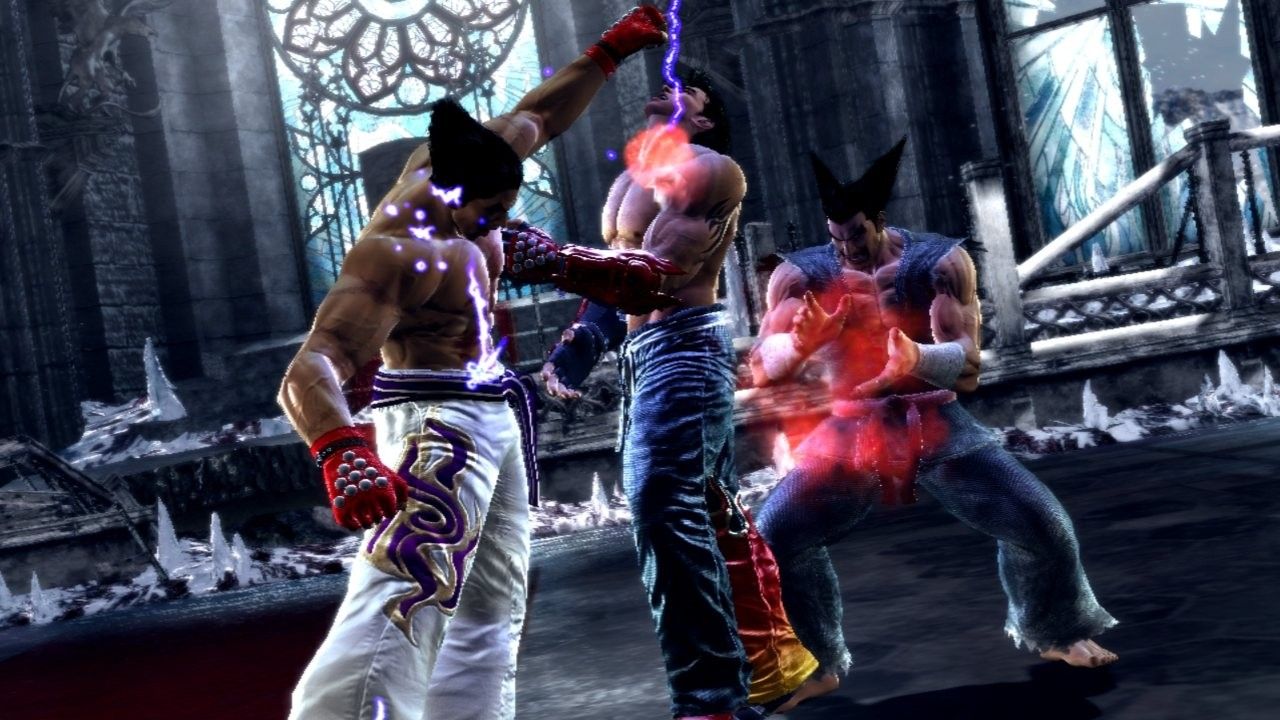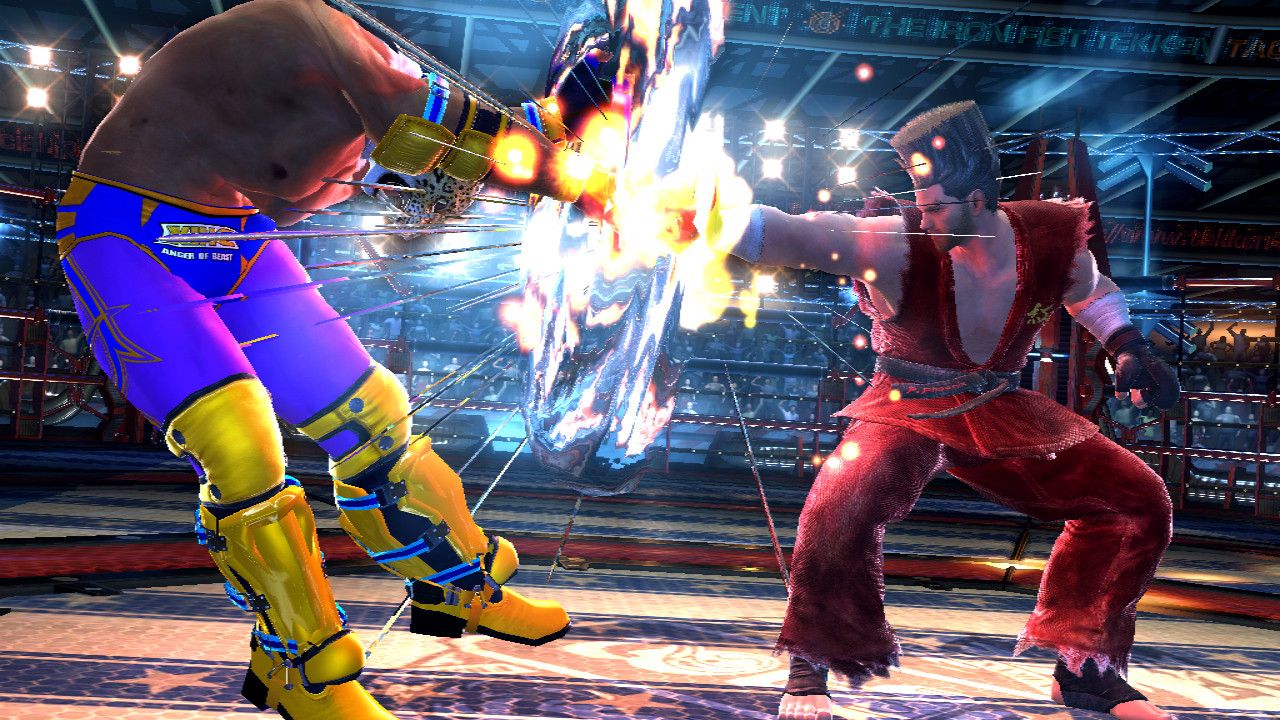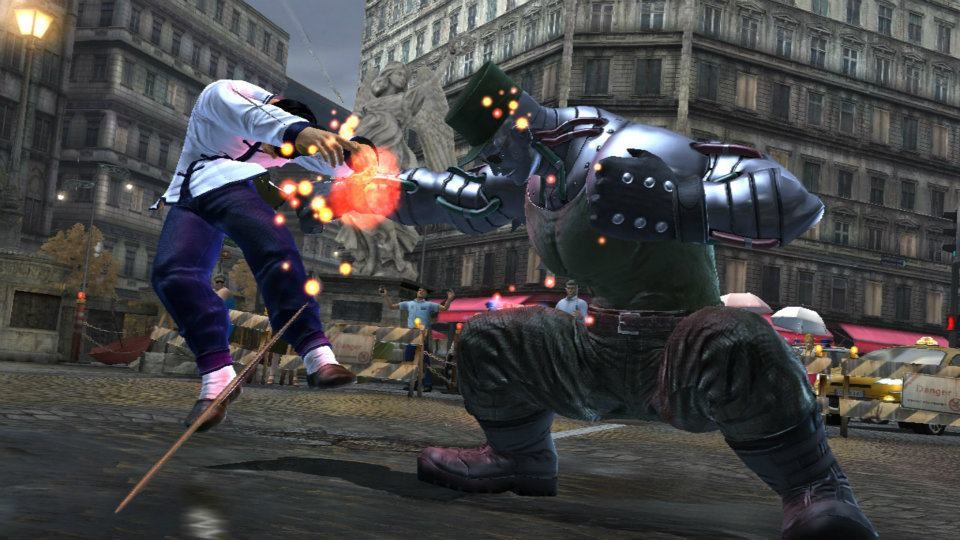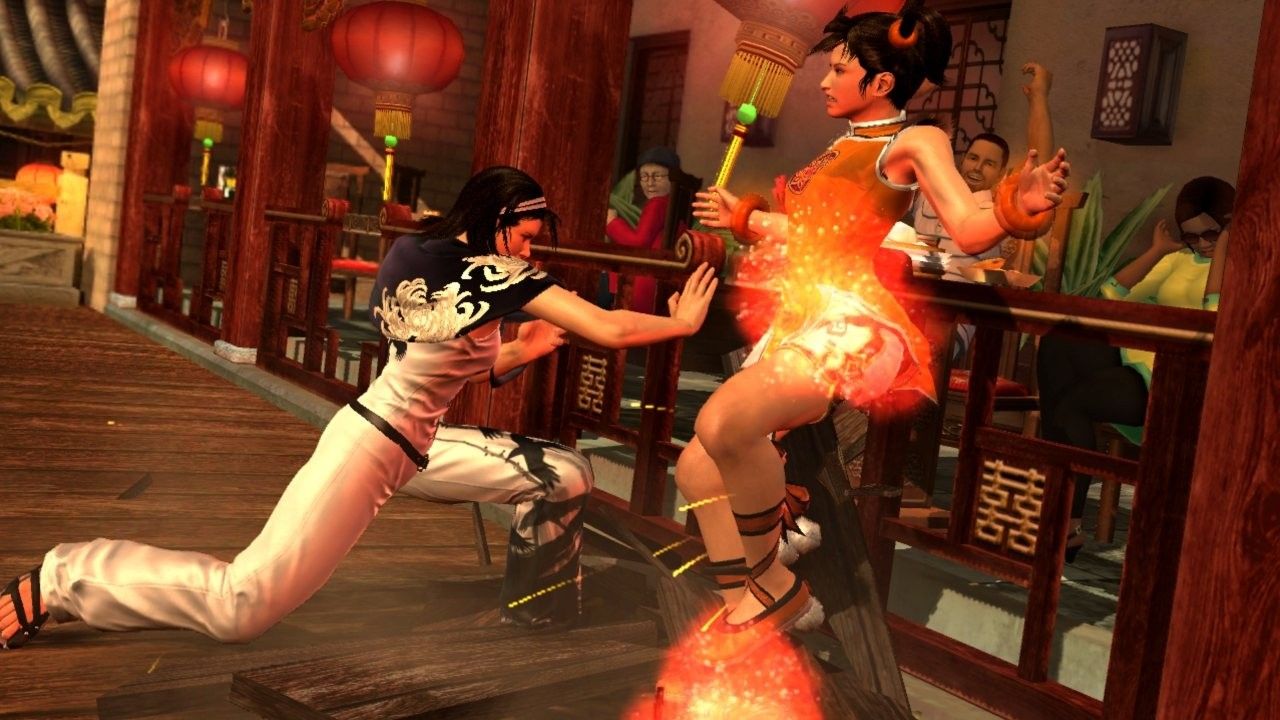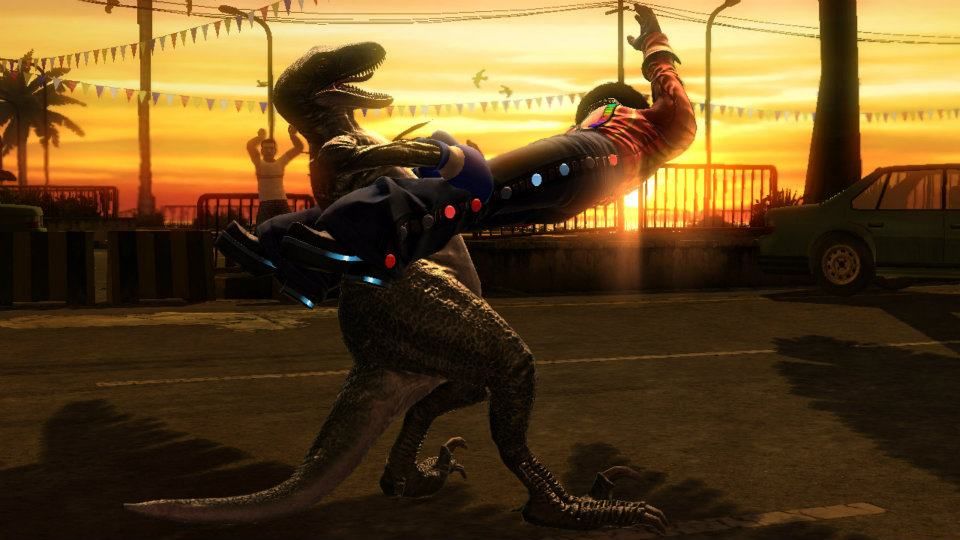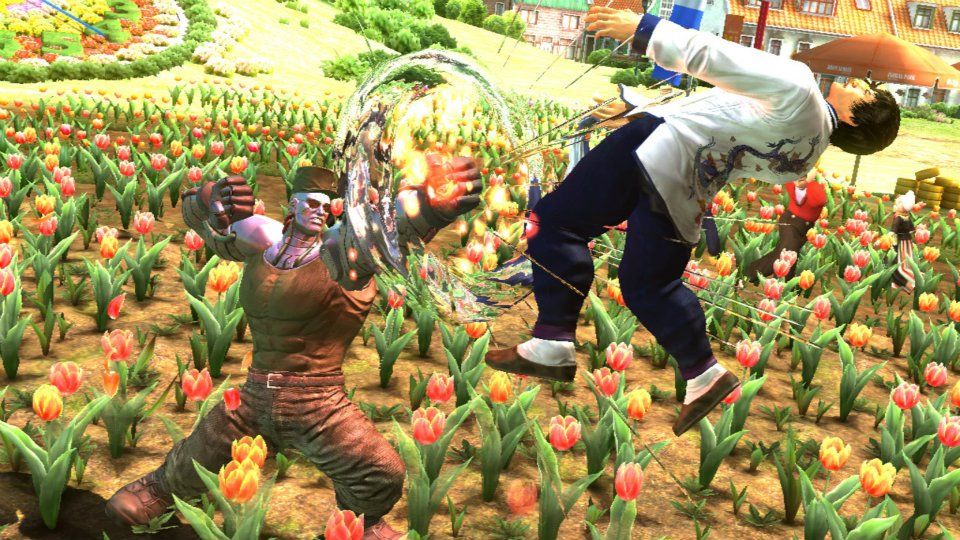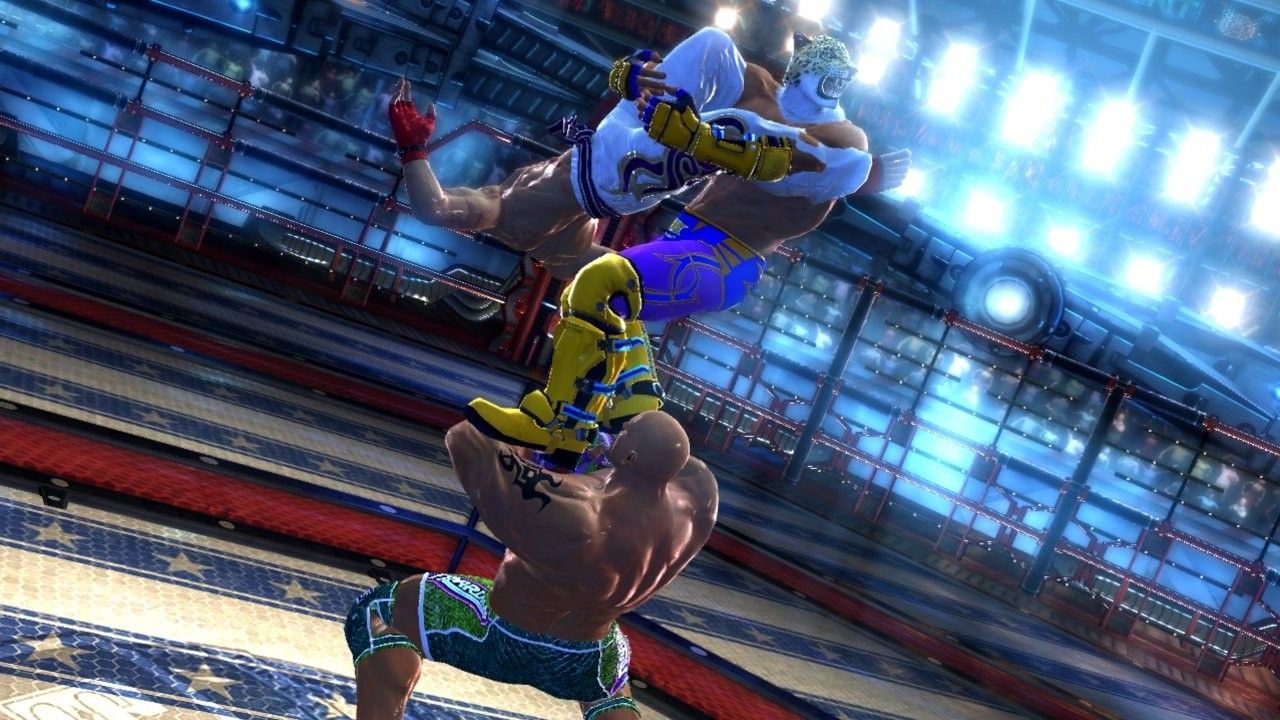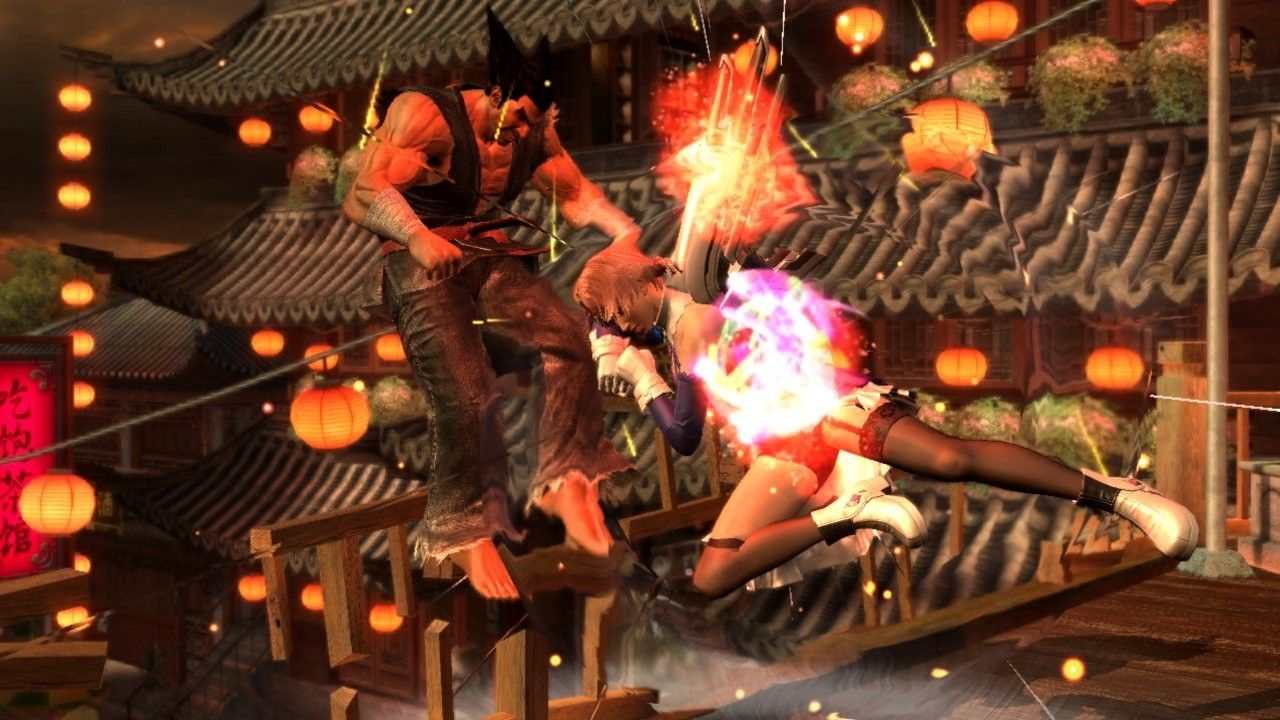This year has been quite crowded with fighting game releases and – to the delight of series fans– the vast majority of them have been high quality productions. Although it carries the clout of the instantly recognizable Tekken brand, Tekken Tag Tournament 2 does not rest on its laurels. Instead, it delivers what may be the most complete, most refined fighting experience of the year. It gets right down to business and sets its sights squarely on the hardcore fan base that made the series what it is today.
Without doubt, Tekken Tag Tournament 2 faces all of its competition head on. The entire game feels grand and marvelous, from the main menu to the character select screen to the ending credits. It exudes a level of polish only possible because of Namco's many years of genre expertise and a tangible appreciation for this series and its dedicated fans. It's an unadulterated explosion of Tekken awesomeness pressed onto a disc and more fighting game than you can shake a stick at.
The game boasts very similar visuals to Tekken 6, which I think we can all agree is a good thing. The 3D character models and stages are all vivid, crisp and detailed. The CG cutscenes are also very nice to look at. It is perhaps not the best looking 3D fighter to release this year (in my opinion, Dead or Alive 5 gives it a pretty good run for its money), but it is definitely a pretty game. The stages in particular are wonderfully designed and they’re all rich with charm and excitement.
Complimenting these lovely visuals is an absolutely stellar soundtrack. The soundtrack to the original Tekken Tag Tournament is one of my absolute favorite video game related records of all time. Tekken Tag 2 sounds almost equally awesome. The game includes remixes from Tekken Tag Tournament, as well as plenty of new music. What I appreciate about the soundtrack is that it blends in plenty of dance and techno elements, whereas most fighters lean almost exclusively on sounds of rock and or metal. I’ve always felt that fighting game music should be music you could dance to, and TTT2 pulls this off wonderfully.
As far as other sounds go, I also really enjoyed the sound effects and character voices. The sound of a blow connecting with an opponent is loud and thunderous, similar to older titles in the series. The character voices are cool because most of the characters speak their native languages. I complained in our Dead or Alive 5 review that Helena was the only character with an accent despite the wholly international character roster. TTT2 on the other hand incorporates several different languages for character voices. Lili, who is from Monaco, speaks French. Leo, who is from Germany, speaks German. Miguel speaks Spanish.
Although it is ridiculous how all these characters are able to clearly communicate with one another despite speaking different languages, the entire approach seems more genuine than having the whole international roster speak perfect English (or perfect Japanese, for that matter).
The game looks and sounds great, but the biggest standout is the wonderful game-play. The exciting 2-on-2 format that made the first game so popular makes a triumphant return. Players can choose two different characters and, as the game’s name suggests, partake in hype tag team battles. The classic 1-on-1 format is available, but the majority of the new systems in the game are intended for use in tag battles. These systems include tag combos, tag assaults, direct tag assaults, tag throws and tag crashes.
The tag combo allows you to quickly switch to your second character after connecting a launcher with your first character to continue your combo. This allows you to safely switch characters and deal a good bit of damage at the same time. The tag assault allows you to call your partner in during a combo to perform a brief attack and extend your combo. While this does not switch characters like the tag combo, it allows for some bigger, more damaging combos. Tag assaults are activated by hitting the tag button just before an attack that ‘bounds’ or bounces your opponent from the ground connects while they're airborne. For this reason, effective tag assault combos are in close reach to more advanced players.
Direct tag assaults bring both of your characters onto the screen at once and allow them to briefly attack in unison. Surely this can be used to craft some devastating offenses, but I haven’t seen it used relatively effectively. The tag throws work pretty much exactly the same way they did in the first game. You switch characters by performing a flashy and damaging tag throw on your foe. Finally, the tag crash allows you to safely switch out one of your characters while the other comes out swinging. This is useful for instances where an opponent presses their attack on one of your characters in an attempt to K.O. them before you can switch them out.
That is a problem because, like in the original game, when one of your characters is knocked out, the round is over, regardless of how much stamina your other character retained. All of these new systems makes playing with two characters a more tactical option than just playing with one. The game allows for mismatched 2-on-1 battles, where the solo character has increased stamina and strength to compensate for the handicap. There are also more advantages to using only one character, though they seem tame in comparison the many advantages of using a team.
The core game-play remains similar to Tekken 6, though various changes have been made. Fights are fast and frenetic, with battles between experienced players going on for quite a while before even a single blow is landed. Big juggled combos are back, and some of the tag and tag assault combos are absolutely beastly. Tekken 6’s interactive destructible walls and floors are back, but TTT2 introduces breakable balconies. Unlike knocking your opponent through a wall or a floor, knocking them from a balcony results in a bound and switches out your character. This means that you can begin a combo with one character and knock them through a balcony and they’ll land with a bound right in front of your other character, allowing you to continue the assault.
The most powerful combo would probably implement a bound from the ground, a tag assault combo extender, and then a juggle to a wall or balcony, from which even more damage can be dished out. The rage comeback mechanic makes a return. Once your character or team takes enough damage, they’ll glow red with fury and all of their attacks will claim more damage.
The character roster is the biggest in any Tekken game yet, and that is saying quite a bit considering how many characters past series entries have included. There are nearly 60 characters included with your purchase. On top of that, Namco recently added more characters in the free update and they’ve promised even more down the line. Some are more effective than others (the Mishimas are downright superior) and some are very similar to others, but overall the roster is a sprawling ocean of options and possibilities. It’s almost as if every Tekken character ever conceived is here.
The many new attack options and systems make this a deeply technical fighter, although the simple inputs cater to mash-happy beginners looking for casual fun with friends or family. Bolstering the rich game-play is an absolute treasure trove of game modes and features. Indeed, Tekken Tag Tournament 2 is one of the most fully featured fighting games to release this year. Nearly everything you do in the game, online or off, nets you in-game currency that you can use to customize your characters. I should also mention that you have an offline rank which is affected by the ghost mode and an online rank, which is affected by netplay.
The character customization mode is vast and it allows you to change the costumes, hairstyles and colors of any character. You can even equip various weapons and items, some of which can be used to perform actual attacks during fights. The weapon attacks mostly have huge startup times and generally seem pretty useless in any competitive extreme though. The wide customization options lead to some pretty outlandish and ridiculous costumes online, but it’s all in good fun and it allows every player to be unique.
The online mode features a competent netcode that yielded smooth matches even when I switched from my wired high-speed internet connection to a flimsy wi-fi connection. You can create multi-player lobbies and chat within them while spectating matches. For ranked or player matches, you’re placed in a stripped down training mode as you await a challenger. This turns time you’d normally spend sitting there waiting into quality time spent practicing and learning your characters techniques and combos. It also snatches you from this training as soon as a match is found, instead of having you manually return to a lobby while your impatient new challenger waits for you.
You can also customize the character portrait art that appears on the loading screen between matches, and I thought that was really neat. Replays of each and every fight are automatically saved and uploaded to the Tekken channel. There, you can view replays of player and ranked matches and sort them by character. You can also download replays if you see something particular that you need to hang on to. The recent free update also added the Tekken World Stage, which allows dozens of players to congregate in lobbies and form tournaments and such.
I should also mention that if you have a PC you can join the free Tekken World Federation service which tracks the intricate, individual online match and stat details of every single player and integrates social networking. So it’s pretty awesome and it’s free. This is just more of the love that this game generously pours onto Tekken’s many passionate fans. Conclusively, the online mode is great.
The offline mode offers the same value. There are the standard arcade, team battle, survival, time attack and practice modes, all of which are perfectly sound. The most challenging single-player mode is ghost battle. This mode simulates the online experience by offering a never-ending stream of customized opponents that grow stronger as you advance. The ‘ghosts’ have unique handles and costumes. You increase your offline rank as you win battles, and of course earn plenty of currency to customize your character with.The fights are pretty easy at first, but once you ascend in the ranks you’ll be in for some devastating defeats.
The offline multi-player allows for pair play, in which up to four players can face off in tag team battles. This mode is really enjoyable if you have four controllers and people to play with. The fight lab could be the most significant of the offline modes. It is basically a fairly comprehensive tutorial mode, narrated by the hilarious Lee. Aside from walking you through all of the game’s most vital systems, it also allows you to customize the attacks of Combot. Combot is basically the game’s silent protagonist and clearing the mode unlocks points you can use to purchase different attacks for him to use. I cleared the mode once and visited the garage, but I wasn’t entirely clear on the point of unlocking all of the moves.
Furthermore, the game also includes a gallery for both music and cinematics. Clearing arcade mode with each character will unlock their ending movie and there are also various other movies to unlock, such as the awesome opening I mentioned earlier. You can also now unlock opening and ending cinematics from past Tekken games. In total, there is more than an hour worth of cinematics to view. Additionally, the music gallery allows you to not only listen to all of the game’s lively tunes but also to customize which tracks play in which stages.The player info mode keeps track of all your personal stats, such as player usage rate, win percentage and overall playtime.
TTT2 is executed so well that it’s rather hard to find fault in it as a fighting fan, but I did end up with one minor complaint. Story-wise, the title offers nothing but the standalone character endings, very few of which seem to have a connection to any other. There is practically no canon storyline, though I doubt the developers could have come up with anything too relevant with so many characters. Whether or not past games conveyed a rich narrative is debatable, but be assured that you will not find a deep plot here.
Nevertheless, Tekken Tag Tournament 2 is so good that it’s hard to take anything away from it. With great graphics and sound, deep, technical game-play, tight netcode, an army of characters and a smorgasbord of game modes, Tekken Tag Tournament 2 is just downright awesome. Unlocking and purchasing everything in the game will take dozens of hours. Becoming a good player will take dozens more. On top of that, there is free DLC (which adds stages and a new game mode in addition to characters), the free Tekken World Federation service and so much more that Namco could have easily sold separately as premium content.
The amount of sheer fan service and value in this title is staggering. It is truly a fitting celebration of the respected Tekken series and as such it could be the best fighter to come out this year.

